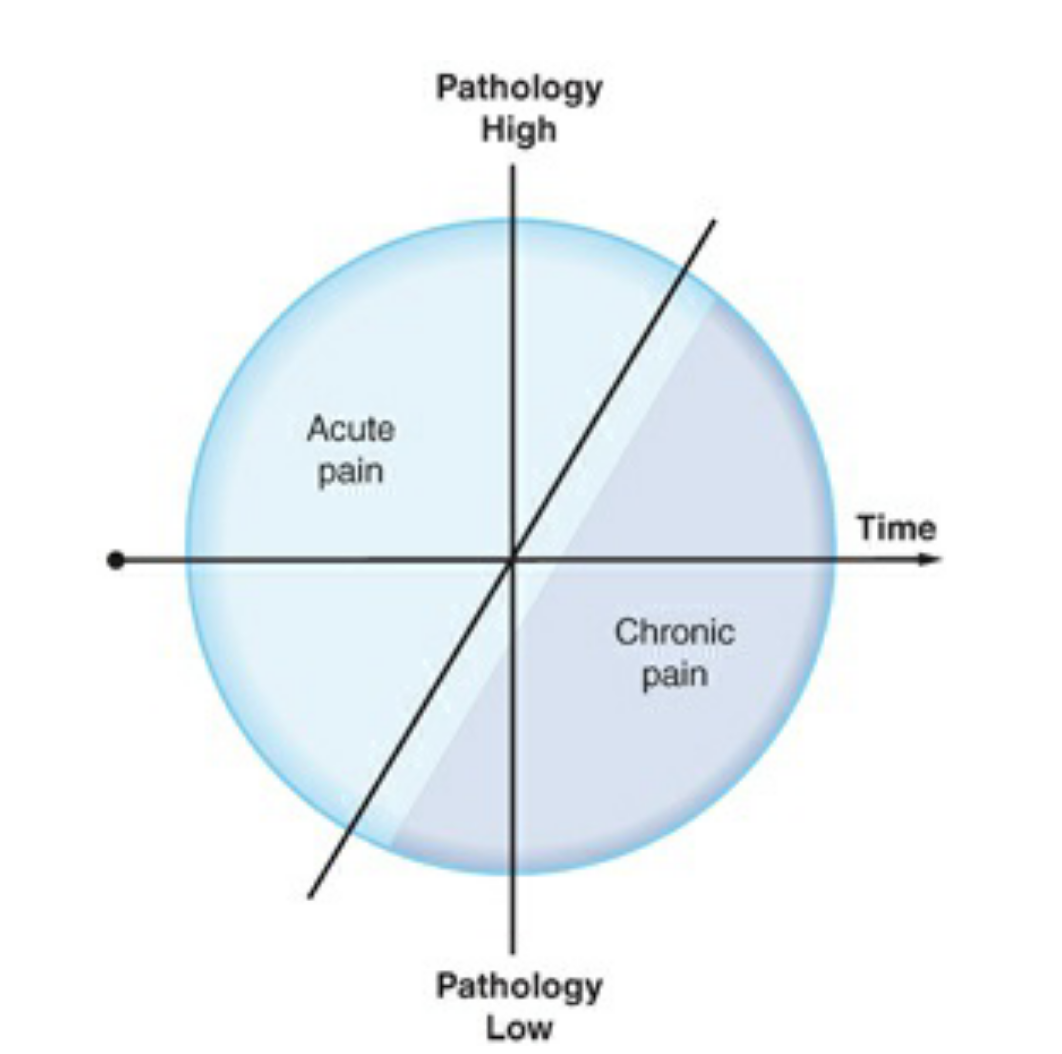Acute Pain
- Welzack Chapter 13 Autonomic, Endocrine, and Immune Interactions in Acute and Chronic Pain1
Definition
Problems with traditional acute/chronic classification
Traditionally, Acute vs chronic pain has been defined based on an arbitrary time frame (3mo or 6mo)ballantyneBonicaManagementPain2019?. These criteria do not take into consideration
- Intensity of painballantyneBonicaManagementPain2019?
- SeverityballantyneBonicaManagementPain2019?
- Nature of its impact on functioning or treatment-seeking behaviorsballantyneBonicaManagementPain2019?
- Whether pain must be present every dayballantyneBonicaManagementPain2019?
- How frequent it occurs in this intervalballantyneBonicaManagementPain2019?
New Classification
A new classification was proposed conceptualizing acute and chronic pain on two dimensions: time and physical pathologyballantyneBonicaManagementPain2019?
Acute pain is the physiologic response to and experience of noxious stimuli that can become pathologic, is normally sudden in onset, is time-limited, and motivates behaviors to avoid potential or actual tissue injuryballantyneBonicaManagementPain2019?. Pain is elicited by the injury of body tissues and activation of nociceptive transducers at the site of local tissue damageballantyneBonicaManagementPain2019?. The local injury alters the response characteristics of the nociceptors and perhaps their central connections and the autonomic nervous system in the regionballantyneBonicaManagementPain2019?. In general, the state of acute pain lasts for a relatively limited time and remits when the underlying pathology resolvesballantyneBonicaManagementPain2019?. This type of pain often serves as the impetus to seek health care, and it occurs following trauma, some disease processes, and invasive interventionsballantyneBonicaManagementPain2019?.
